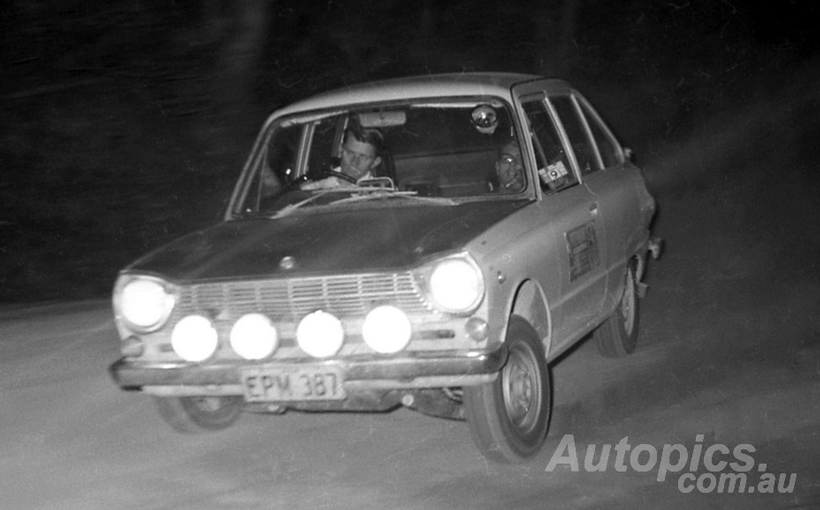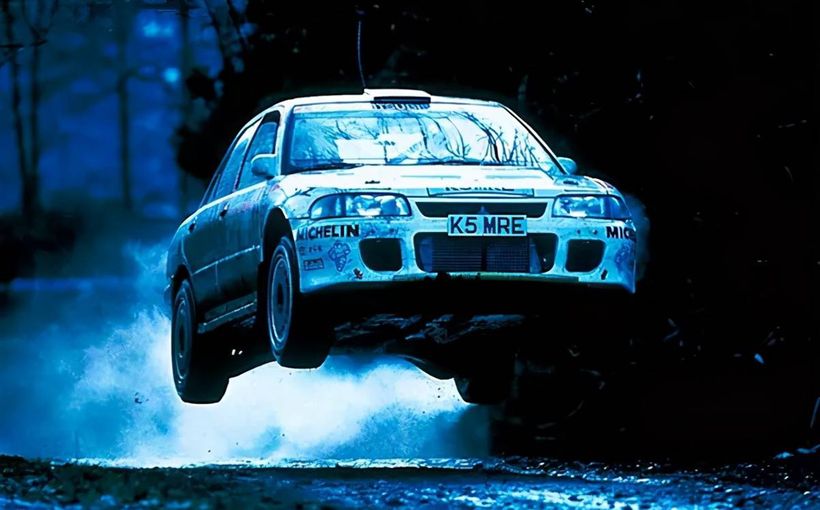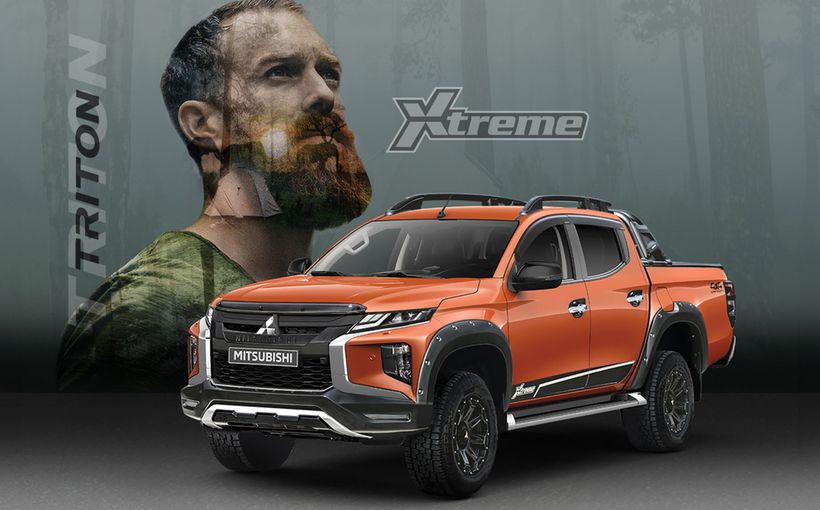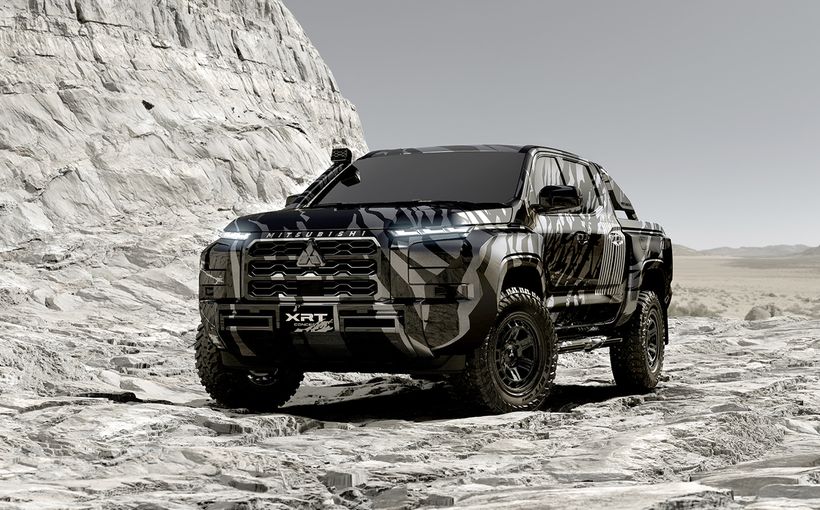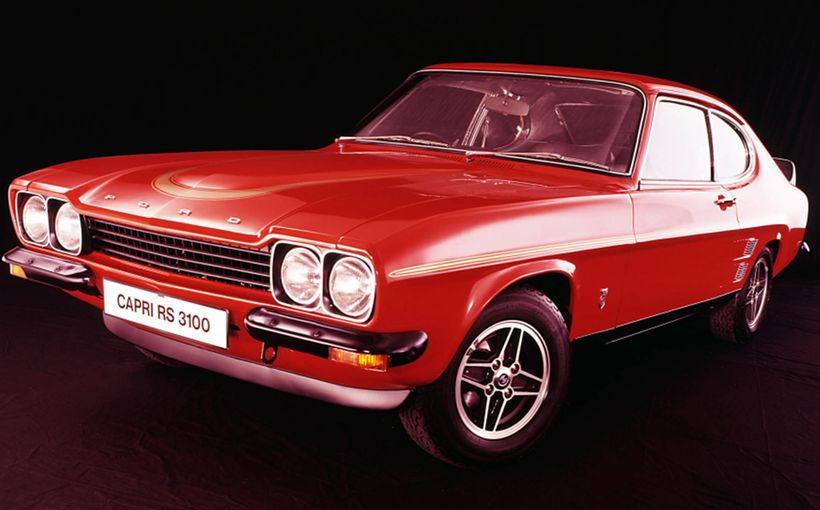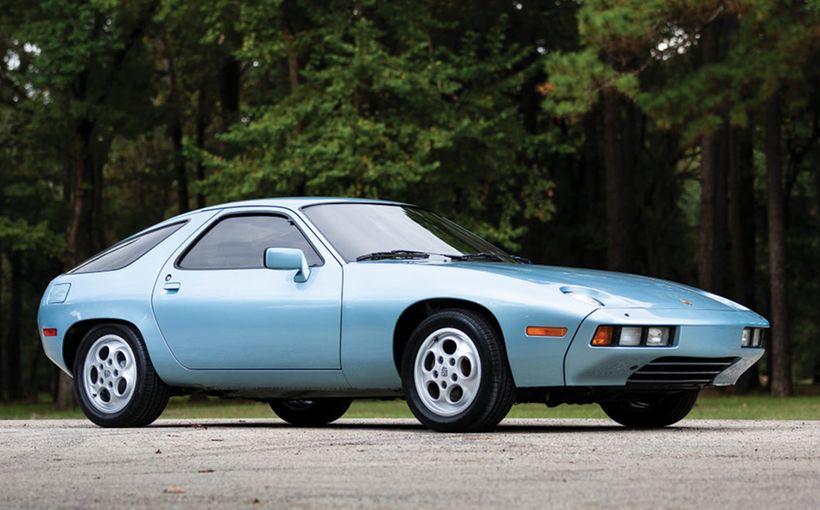Mitsubishi Colt 1000F and 1100F: how Australia put the ‘Fast’ in Fastback

Mitsubishi boasts a revered international rallying history, with multiple World Rally Championships, Paris-Dakar victories and countless national and regional titles. And, amazingly, it all started with an unexpected win in Australia for the diminutive Colt 1000F.
That pivotal moment occurred in October 1967, with the second running of the Southern Cross International Rally. Colin Bond, then a prodigiously talented 24-year-old whose star was quickly on the rise, steered a near-stock Mitsubishi Colt 1000F (1000 for cc, F for Fastback) to a class victory and fourth place outright.
It was a stunning achievement by Bond and navigator Brian Hope, particularly in outright terms, given the field comprised numerous works teams with professionally-prepared cars and international stars that were in another stratosphere compared to the Mitsubishi rookies.
All of a sudden the Australian motoring press, which had initially been lukewarm in its assessment of the unusual-looking car, began to appreciate its robust engineering and sporting qualities. Its rallying success proved Mitsubishi’s ‘little stallion’ had more than enough kick to cope with Australia’s harsh conditions.

This was exactly the brand perception Mitsubishi wanted to create for the Colt. Like numerous Japanese post-war manufacturers, it had identified a need to prove the quality of its products to largely sceptical western export markets by competing in motor sport at the highest levels. And, like Datsun, it chose rallying rather than racing as the best way to achieve it.
Australia was considered a crucial first step in that process, given that it was an established western market in close proximity to Japan. A vital connection was made through the versatile race and rally driver Doug Stewart, who in Volkswagens had won the 1957 Ampol Round Australia Trial and claimed a top-five finish in the 1964 Ampol Trial.
Stewart got to know Mitsubishi Japan staff through rally events in New Caledonia and New Guinea in the early 1960s, when the company was taking its first tentative steps in rally events in the Asia-Pacific region.
The Japanese company’s ties with Stewart grew stronger when the first Mitsubishi Colt, the 1000 sedan, was launched in Australia in 1965 and a national network of enthusiastic state distributors and dealers was soon established.

With plans to expand its local model range to include the latest Colt 1000F model, in late 1966 Mitsubishi entrusted Stewart to subject its pre-release cars to extremes of Australian road conditions and summer temperatures in a brutal 13,000km durability test. The goal was to test the two Colts to destruction, but they refused to lay down and die.
Stewart and his local rally colleagues were greatly impressed by the Colt’s inherent toughness and handling agility. However, they also identified where numerous refinements could be made; most of their suggestions were embraced by Mitsubishi’s product planners and applied to future production versions.
Not surprisingly, Stewart was also convinced it would make a great rally car. Given that the two pre-production test mules sent from Japan were considered sacrificial, it wasn’t hard to persuade Mitsubishi to leave them in Australia to compete in rallies the following year, when the new model was also due to be launched on the local market.
And so began the brief but brilliant era for the Mitsubishi Colt 1000F - and its hotter 1100F SS and 11F SS successors - in Australian rallying. This pioneering Australian campaign, which will be revealed in this story, is credited by Mitsubishi as the catalyst for its rapid expansion in the sport and future global dominance.

1967 Southern Cross International
The Mitsubishi 1000F was released in Australia early in 1967. With a compact 2200mm wheelbase, overall length of less than 3800mm and narrow width of only 1450mm, its light but strong unitary body construction resulted in a nimble 760kg kerb weight.
It was also disarmingly simple, with a leaf-spring live rear axle and front wheels suspended on a transverse semi-elliptic leaf spring. Steering was the strong recirculating ball type and braking was via four-wheel drums. The hearty and free-revving 997cc KE43 OHV pushrod four-cylinder engine was rated at 54 bhp and connected to a four-speed gearbox.
Sure, it was simple, but also incredibly robust and could be driven with great gusto over the harshest terrain without complaint. This enviable attribute, combined with predictable handling and small car agility, meant the Colt was ideal for rallying. It could more than compensate for its sub-1000cc engine capacity by matching - and often beating - the stage times of more powerful rivals, particularly with a driver of Colin Bond’s talent behind the wheel.
The Southern Cross International’s standing as one of the world’s most prestigious rallies was assured from its inception in 1966, particularly in Japan where it soon rivalled the East African Safari in credibility for a winning manufacturer. Success in this event, like the Safari, would quickly become a measure of automotive quality.

And so it was, in this simmering pressure cooker of competition, that four Mitsubishi Colt 1000Fs were entered for the 1967 Cross. To be held over four nights and five days, the gruelling 4000km distance covered challenging and often mountainous terrain between Sydney and Bairnsdale, of which 1200km were competitive special stages.
The four Colts were crewed by Doug Stewart/John Bryson, Colin Bond/Brian Hope, Barry Lloyd/Albert Brown and Vince Brown/Barry Field. Their competition, in the form of multi-car works teams, was formidable including Ford, BMC (headlined by international stars Paddy Hopkirk, Timo Makinen and Tony Fall), Volkswagen, Holden, Renault, Volvo and Fiat. Even Japanese rival Datsun entered two of its 1000cc sedans in the huge 84-car entry.
All cars were equipped with powerful auxiliary lighting as most of the 1200km of competitive special stages were held at night. The precipitous rocky roads of the Snowy Mountains and Great Dividing Range ensured that 11 cars had retired after only 400km, but Bond immediately impressed by surging into fourth position outright headed only by the three star-studded works Mini Cooper Ss of Makinen, Fall and Hopkirk. However, Makinen and Hopkirk were soon out with gearbox failures.

The southern run towards Bairnsdale in Victoria’s Gippsland region saw Bond lose a few places to faster cars but his little Colt was still running strongly, unlike some more fancied rivals. These included Fall’s works Cooper S which blew a head gasket and Ford team leader Harry Firth whose MkII Cortina Lotus ‘retired’ at the bottom of a 20-metre cliff!
When the depleted field of 59 cars departed Bairnsdale for the third night of competition, Bond amazed everyone with the Colt’s speed and stamina on the return loop through the Snowies to Canberra. Heavy rain turned many unsealed roads into quagmires, resulting in numerous crews either getting bogged or incurring time penalties by skipping some of the worst sections just to stay in the event.
Bond’s team boss Doug Stewart suffered an enormous accident on this stage after misjudging a large road dip at 160km/h. The resulting end-for-end somersault caused extensive damage to the Colt but the service crew was quickly on hand to ensure the still driveable wreck could limp into Canberra under its own power where more extensive repairs could take place. Amazingly the badly crumpled Colt made it to the finish and salvaged third in class.

Amidst this mayhem the irrepressible Bond had surged up the leader board to be in third place by the time the field returned to the nation’s capital. The fourth and final night, which organisers promised would be the toughest, featured lots of tight and twisty forest roads on which Bond, Hope and the Colt again excelled on the final leg to Sydney.
Although they were narrowly edged out of third place on the final stages, fourth place outright and a thumping win in the 1001-1300cc special production class far exceeded Mitsubishi’s wildest expectations against such strong competition.
After all, Bond and Hope were beaten only by factory crews including Bob Holden/George Shepheard in a Mini Cooper S in third, the Frank Kilfoyle/Doug Rutherford Cortina GT in second and the winning Barry Ferguson/Dave Johnson VW Beetle, which was one of four very rapid works cars built specially for the event with powerful 1600cc engines.

1968 Southern Cross International
In August 1968 the Colt Fastback was given a mild performance boost with the launch of the 1100F model, now armed with Mitsubishi’s 1088cc KE44 OHV pushrod four. Power output increased from 54 to 58bhp at 6000rpm.
This was a portent of things to come as the 1100F was followed months later by the 1100F SS or Super Sport, which with engine upgrades including Hitachi twin SU-type carburettors, a high-lift camshaft and bigger exhaust bumped the power output from 58 to 76bhp at 6500rpm. The SS model’s release in October was also perfectly timed to coincide with the Southern Cross International.
Its growing stature ensured another big entry for 1968, even though numbers (76 cars) were slightly down on the previous year due largely to preparations by some local crews to compete in the London-Sydney Marathon. Even so, there was still a strong works team representation with Ford, Volvo, BMC, Holden, Renault and Datsun all fronting with multi-car teams.
And of course, Mitsubishi, under the leadership of Doug Stewart. Again there were four Colt fastbacks, but this time two were the new 1100F SS models crewed by Colin Bond/Brian Hope and Doug Stewart/Barry Field. Two earlier 1000F models were shared by Barry Lloyd/Albert Brown and the all-female crew of Sandra Bennett/Wendy Taylor/Carole Waldron.

The duration was again four nights and five days, but this time it was Sydney-Melbourne-Sydney covering a total distance of 3425km. The first 725km leg from Sydney to Canberra over the Great Divide saw the flying works 142S Volvos of John Keran and Max Winkless in first and third positions split by Frank Kilfoyle’s works Cortina GT. And again, holding a stunning fourth place was Bondy’s little Colt, ahead of numerous theoretically superior works cars and drivers. Team-mate Stewart was lying seventh.
The second leg between Canberra and Melbourne, a distance of almost 1000km, served up some very challenging terrain which saw numerous retirements including BMC’s international star Paddy Hopkirk with clutch failure in his Cooper S. Keran was still leading Kilfoyle with Bob Watson’s works V8 HK Kingswood demoting Winkless to fourth and Bond to a still excellent fifth.
The 700km third leg from Melbourne to Albury saw more challenging special stages through the rugged Snowy Mountains region, with the first three positions remaining unchanged. However, giant-killer Bond rose to equal fourth with Tony Roberts in the second of the factory-prepared HK Kingswood V8s. And the best was yet to come.

The final leg from Albury to Sydney showed just how tough the third annual Southern Cross had been, with the original 76 starters reduced to just 45. After another gruelling test which passed through Tumut, Yass and the Blue Mountains, Keran and his Volvo 142S retained a vice-like grip on the lead to win from Kilfoyle’s Cortina GT, after a gripping struggle between two of Australia’s best rally drivers and works teams.
And in third place was Bond, after masterfully outpacing Roberts’ big V8 Holden on the final night to go one better than his fourth position the previous year. The 25-year-old also ran away with the up-to-1300cc special production class, achieving a result which again far exceeded Mitsubishi’s expectations in such exalted company.
It was the second and last time Bond would drive a Colt Fastback in the Southern Cross, for a compelling reason. In 1969 Holden’s new competitions boss Harry Firth made Bond an offer he could not refuse; a factory drive with the newly formed Holden Dealer Team in both touring car racing and rallying.
It was the end of a brief but brilliant era for Bond and Mitsubishi, which played a huge role in changing perceptions of Japanese cars not being tough enough for Australian conditions. It also gave Mitsubishi the confidence to tackle one of Australia’s toughest events in 1970 to send its much-loved Colt Fastback out on a high…

1970 Ampol Trial
If there was ever an event that would showcase the incredible stamina of the Mitsubishi Colt Fastback it was the 1970 Ampol Trial.
The Monte Carlo-style start saw the huge 223-car field depart from four different states to assemble at Port Augusta in South Australia. From there the field headed north through the Flinders Ranges to Alice Springs, where the ‘core’ field of 160 cars then trekked north-east across the vast Queensland outback via Mount Isa to Cooktown. It was then south-west to Adelaide via Swan Hill, then east through the Victorian goldfields to Melbourne and across the snow-capped Victorian High Country to Canberra, before the final leg through Bathurst to Sydney.
It was a serious drive, 10,000 miles (16,000km), the same as the London-Sydney Marathon held two years before it. However, the Ampol’s tighter scheduling of only 14 days meant crews would have to average more than 1000km a day. It was a crippling test of drivers and vehicles, particularly given that the rules demanded competing cars were ‘showroom stock’ apart from the addition of basic safety equipment, bull bars, extra lighting etc.

There were multi-car works teams from Ford (302 V8 XW Falcons) and Holden (350 V8 Monaros) plus Citroen, Renault – and Mitsubishi. Emboldened by the giant-slaying success of its Colt Fastbacks in the Southern Cross, the Japanese manufacturer backed a three-car works entry of the latest 11F SS models (now with front disc brakes and larger 13-inch wheels) crewed by Doug Stewart/George Shepherd, Doug Chivas/Bob Riley and Barry Lloyd/Alan Browne. There were also privately-entered Colts.
As expected, such a long event at such high sustained speeds over such harsh terrain claimed many victims. As Bill Tuckey observed in his marvellous book, From Redex to Repco: “Of the 160 cars that left Alice Springs, 112 staggered into Sydney, with smashed body panels, things held on with adhesive tape, plastic windscreens, smashed lights and exhaust systems dragging on the ground.”
The 1970 Ampol Trial had joint winners. Jean-Claude Ogier (who was driving the leading Citroen when it collided with a spectator’s car in the London-Sydney two years before) and his wife Lucette in their Citroen DS21 tied on points with Kenyans Edgar Herrmann and Hans Schuller in a Datsun 1600 SSS. Third place went to Colin Bond in the HDT’s big bruiser Monaro GTS 350.

And in fourth place, looking comparatively unruffled, was the first of the factory-backed Colts with Doug Stewart/George Shepherd leading home the other two cars in sixth and seventh places. The Colts also dominated their class with a perfect 1-2-3 result and also claimed the coveted teams’ prize for Mitsubishi.
Given the difficulty of the event and high quality of the competition, it was another superb result for Mitsubishi which further enhanced the Japanese brand’s credibility as a quality car maker. And, with the all-new Colt (sold as the Galant in Australia) set to take over rallying duties in 1971, a fitting finale for the Colt’s unexpectedly brilliant competition career.

